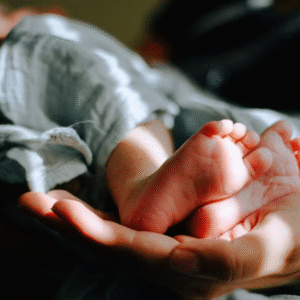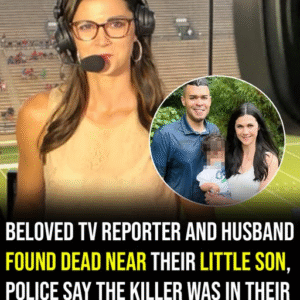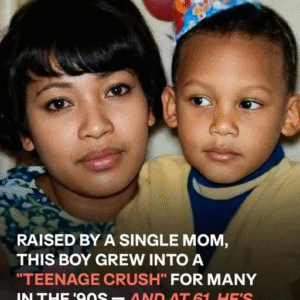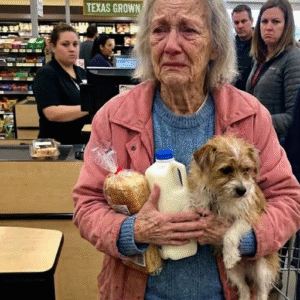At 16, Emily Traveller was like any other teenager — a high school sophomore dreaming about college, hanging out with friends and cheering at football games. But then, in the final weeks of her sophomore year, her life took an unexpected turn.

It was late April — almost prom season — when she and a friend spontaneously decided to go on a double date to the sand dunes. “It just seemed like a fun adventure,” she tells PEOPLE exclusively over Zoom. After letting her parents know, they loaded up a UTV, known locally as a Razor, with snacks and s’mores for the two-hour drive.
They drove out to the dunes and enjoyed a picnic. When it was time to head back, Traveller set a few things on her lap and, since the car was parked nearby, skipped her seatbelt.

Emily Traveller
Moments later, everything went black. The Razor hit a hill and rolled four times. Traveller struck her head on the roll cage, breaking her neck. Her friends were injured too, though less severely — one broke her collarbone, another split his head open.
“I woke up and couldn’t feel anything,” the Utah native recalls. “I realized almost immediately that I couldn’t move.”

Emily Traveller
Nearby campers rushed to help before she was airlifted to Utah Valley Hospital for emergency surgery. Doctors told her she had broken C5 through C7, but the bones had damaged her spinal cord at C4.
After surgery, the reality of her situation sank in.
“When I saw my friends and family, it hit me all at once,” she says. “Suddenly, there were a million nurses and doctors around me, and I couldn’t even breathe on my own. I couldn’t really grasp what life in a wheelchair would mean. That was the beginning of learning to live all over again.”
From there, Traveller spent 10 days in the hospital relearning how to breathe, eat, even cough, before transferring to Craig Hospital in Colorado, one of the nation’s top spinal rehab centers. For four months, she worked to regain strength and learn how to live in a wheelchair.
“I thought my life was over,” she admits. “I remember telling my mom I didn’t want to live if I was paralyzed. One day I was a healthy teenager — the next, I couldn’t even breathe on my own.”
But what felt like the end became something entirely different. At Craig Hospital in Colorado, Traveller threw herself into grueling physical therapy, sometimes spending hours just trying to lift her arm.
Her friends and family became her lifeline.
“People were always visiting, sending letters, cheering me on,” she recalls. “Even in the ICU, those small moments — relearning a movement, feeling progress, knowing people were behind me — kept me going.”

Emily Traveller
Her first small victory came in an unexpected way: swallowing from a straw. Though her brain remembered how, her body didn’t respond the same way. She had to start slowly — tiny sips, little by little — since she was on a feeding tube and couldn’t risk fluid in her lungs.
Then one of the nurses encouraged her to try a smoothie. When she did, the triumph felt enormous. “I had proved myself wrong,” she says.
Eventually, she regained some mobility in her arm, and the sense of pride was overwhelming. “It took a month and a half, and progress was slow, but it was still progress,” she says. “I realized I had to stay in my own lane. Everyone’s injury is different. If I regained function, great. If not, I would still find a way to live fully.”
That mindset carried her through the darkest days. “There were mornings I didn’t want to get out of bed,” she admits. “But then I reminded myself: I have a wheelchair. I’m alive. I chose gratitude, and that choice kept me moving forward.”

Emily Traveller
As she recovered, Traveller turned to social media, searching for other young people who were paralyzed yet still living full lives. That’s when she came across Makayla Noble, a former world champion cheerleader who became a quadriplegic after a freak backyard cheer accident. Noble gave her hope.
Inspired and a bit nervous, Traveller began sharing her own journey on TikTok and Instagram.
“I show the good days and the hard ones,” Traveller says. “Being paralyzed doesn’t mean you can’t live a beautiful life. It’s just different.”
Not much later, her videos — from workouts and everyday routines to the hard moments — quickly went viral. Today, she reaches thousands and has built a community of over 600,000 people on TikTok and nearly 200,000 on Instagram.
“My family was recently in a Razor accident and several of us were badly injured. It is a miracle we all lived. I am so encouraged by your story and your attitude!” one follower commented.
“You’re very inspiring to me — I’m a 51-year-old paraplegic for three years. I’m still trying to be grateful I’m alive, but sometimes it’s hard,” wrote another.
And one added, “You are so beautiful, and your story is so inspiring. Despite all you’ve been through, your gratitude shows through! Thank you for sharing your story 
“I love it when people going through really hard things message me to say my page helped them get through it,” Traveller says. “Sometimes it’s someone who’s recently paralyzed or a young person struggling, like I was. It’s amazing to hear that my story can make even a small difference. It makes me want to keep doing this forever, because of the impact it can have on the people who need it most.”

Emily Traveller
Now 20, Traveller structures her days around therapy, work and staying active. Some mornings begin with therapy, followed by speech practice, workouts and catching up with friends.
“Every day is different,” she says. “When I’m preparing for a speech, I go over it repeatedly while fitting in a workout. Getting ready takes longer, so I have to wake up early — but it’s worth it. Staying busy keeps me out of my head and connected to everyone else. I don’t want to lie in bed all day.”
Today, she travels to speak at schools and events, visits kids in hospitals and is writing a book with her mom. She even interned with an adaptive fashion designer in New York, inspired by the challenges of getting dressed post-injury. One day, she also hopes to give a TED Talk.
“When I speak, it hits me that this really happened to me,” she says. “Sometimes I look at my younger sister, who’s about the same age I was when I got paralyzed, and it makes it feel even more real. My life changed overnight, and it took a long time to adjust. But sharing my story — in person, on social media, or even by helping just one person — gives me purpose. Life is fragile, and it’s hard to talk about all the horrible things that happened, but also the lessons I’ve learned.”

Emily Traveller
“I lived through this and found a way to move forward,” she adds. “I didn’t get the outcome I wanted — I wanted to go back to cheer and be my old self — but I’ve learned how to live in this new way. I try to live by one principle: your circumstances don’t determine your happiness. Being in a wheelchair doesn’t mean I can’t be happy. Sharing my story might be the thing I’m proudest of.”

Emily Traveller
Through it all, she emphasizes resilience.
“I used to constantly compare myself to others and struggled with body dysmorphia. Now, I feel more confident because I focus on gratitude,” she says. “Looking back, I thought my life was perfect, but I had struggles just like everyone else.”
“I’d tell my younger self to stop comparing and to be kind,” Traveller adds. “Everyone faces challenges — illness, mental health struggles, difficult home lives. One thing that helped me at Craig was looking outward, helping others. It lifts you up, too. Learning to be kind, to compare less and to look beyond yourself were huge lessons for me.”
At 16, Emily Traveller was like any other teenager — a high school sophomore dreaming about college, hanging out with friends and cheering at football games. But then, in the final weeks of her sophomore year, her life took an unexpected turn.

It was late April — almost prom season — when she and a friend spontaneously decided to go on a double date to the sand dunes. “It just seemed like a fun adventure,” she tells PEOPLE exclusively over Zoom. After letting her parents know, they loaded up a UTV, known locally as a Razor, with snacks and s’mores for the two-hour drive.
They drove out to the dunes and enjoyed a picnic. When it was time to head back, Traveller set a few things on her lap and, since the car was parked nearby, skipped her seatbelt.

Emily Traveller
Moments later, everything went black. The Razor hit a hill and rolled four times. Traveller struck her head on the roll cage, breaking her neck. Her friends were injured too, though less severely — one broke her collarbone, another split his head open.
“I woke up and couldn’t feel anything,” the Utah native recalls. “I realized almost immediately that I couldn’t move.”

Emily Traveller
Nearby campers rushed to help before she was airlifted to Utah Valley Hospital for emergency surgery. Doctors told her she had broken C5 through C7, but the bones had damaged her spinal cord at C4.
After surgery, the reality of her situation sank in.
“When I saw my friends and family, it hit me all at once,” she says. “Suddenly, there were a million nurses and doctors around me, and I couldn’t even breathe on my own. I couldn’t really grasp what life in a wheelchair would mean. That was the beginning of learning to live all over again.”
From there, Traveller spent 10 days in the hospital relearning how to breathe, eat, even cough, before transferring to Craig Hospital in Colorado, one of the nation’s top spinal rehab centers. For four months, she worked to regain strength and learn how to live in a wheelchair.
“I thought my life was over,” she admits. “I remember telling my mom I didn’t want to live if I was paralyzed. One day I was a healthy teenager — the next, I couldn’t even breathe on my own.”
But what felt like the end became something entirely different. At Craig Hospital in Colorado, Traveller threw herself into grueling physical therapy, sometimes spending hours just trying to lift her arm.
Her friends and family became her lifeline.
“People were always visiting, sending letters, cheering me on,” she recalls. “Even in the ICU, those small moments — relearning a movement, feeling progress, knowing people were behind me — kept me going.”

Emily Traveller
Her first small victory came in an unexpected way: swallowing from a straw. Though her brain remembered how, her body didn’t respond the same way. She had to start slowly — tiny sips, little by little — since she was on a feeding tube and couldn’t risk fluid in her lungs.
Then one of the nurses encouraged her to try a smoothie. When she did, the triumph felt enormous. “I had proved myself wrong,” she says.
Eventually, she regained some mobility in her arm, and the sense of pride was overwhelming. “It took a month and a half, and progress was slow, but it was still progress,” she says. “I realized I had to stay in my own lane. Everyone’s injury is different. If I regained function, great. If not, I would still find a way to live fully.”
That mindset carried her through the darkest days. “There were mornings I didn’t want to get out of bed,” she admits. “But then I reminded myself: I have a wheelchair. I’m alive. I chose gratitude, and that choice kept me moving forward.”

Emily Traveller
As she recovered, Traveller turned to social media, searching for other young people who were paralyzed yet still living full lives. That’s when she came across Makayla Noble, a former world champion cheerleader who became a quadriplegic after a freak backyard cheer accident. Noble gave her hope.
Inspired and a bit nervous, Traveller began sharing her own journey on TikTok and Instagram.
“I show the good days and the hard ones,” Traveller says. “Being paralyzed doesn’t mean you can’t live a beautiful life. It’s just different.”
Not much later, her videos — from workouts and everyday routines to the hard moments — quickly went viral. Today, she reaches thousands and has built a community of over 600,000 people on TikTok and nearly 200,000 on Instagram.
“My family was recently in a Razor accident and several of us were badly injured. It is a miracle we all lived. I am so encouraged by your story and your attitude!” one follower commented.
“You’re very inspiring to me — I’m a 51-year-old paraplegic for three years. I’m still trying to be grateful I’m alive, but sometimes it’s hard,” wrote another.
And one added, “You are so beautiful, and your story is so inspiring. Despite all you’ve been through, your gratitude shows through! Thank you for sharing your story 
“I love it when people going through really hard things message me to say my page helped them get through it,” Traveller says. “Sometimes it’s someone who’s recently paralyzed or a young person struggling, like I was. It’s amazing to hear that my story can make even a small difference. It makes me want to keep doing this forever, because of the impact it can have on the people who need it most.”

Emily Traveller
Now 20, Traveller structures her days around therapy, work and staying active. Some mornings begin with therapy, followed by speech practice, workouts and catching up with friends.
“Every day is different,” she says. “When I’m preparing for a speech, I go over it repeatedly while fitting in a workout. Getting ready takes longer, so I have to wake up early — but it’s worth it. Staying busy keeps me out of my head and connected to everyone else. I don’t want to lie in bed all day.”
Today, she travels to speak at schools and events, visits kids in hospitals and is writing a book with her mom. She even interned with an adaptive fashion designer in New York, inspired by the challenges of getting dressed post-injury. One day, she also hopes to give a TED Talk.
“When I speak, it hits me that this really happened to me,” she says. “Sometimes I look at my younger sister, who’s about the same age I was when I got paralyzed, and it makes it feel even more real. My life changed overnight, and it took a long time to adjust. But sharing my story — in person, on social media, or even by helping just one person — gives me purpose. Life is fragile, and it’s hard to talk about all the horrible things that happened, but also the lessons I’ve learned.”

Emily Traveller
“I lived through this and found a way to move forward,” she adds. “I didn’t get the outcome I wanted — I wanted to go back to cheer and be my old self — but I’ve learned how to live in this new way. I try to live by one principle: your circumstances don’t determine your happiness. Being in a wheelchair doesn’t mean I can’t be happy. Sharing my story might be the thing I’m proudest of.”

Emily Traveller
Through it all, she emphasizes resilience.
“I used to constantly compare myself to others and struggled with body dysmorphia. Now, I feel more confident because I focus on gratitude,” she says. “Looking back, I thought my life was perfect, but I had struggles just like everyone else.”
“I’d tell my younger self to stop comparing and to be kind,” Traveller adds. “Everyone faces challenges — illness, mental health struggles, difficult home lives. One thing that helped me at Craig was looking outward, helping others. It lifts you up, too. Learning to be kind, to compare less and to look beyond yourself were huge lessons for me.”





